Weekly Current Affairs (8th to 14th April 2025) | General Test Preparation for CUET UG - CUET Commerce PDF Download
SC Verdict on Governors' Powers over State Bills
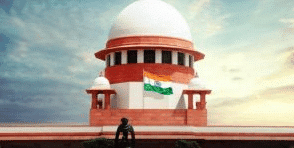
Why in News?
- The Supreme Court (SC) of India, in the case of Tamil Nadu vs. Governor of Tamil Nadu, clarified that the Governor must act on state bills in a time-bound manner, following the aid and advice of the council of ministers, as per Article 200, without exercising independent discretion.
Key Takeaways
- The SC ruled that governors cannot indefinitely delay action on bills.
- Governors must follow the advice of the Council of Ministers.
- Clear timelines were prescribed for governors when dealing with bills.
Additional Details
- Case Background: The Tamil Nadu Governor withheld assent to 10 Bills, leading the state government to challenge this as a violation of constitutional norms and governance disruption. After the Governor's refusal, the Tamil Nadu Legislative Assembly re-enacted the Bills and sent them back, but the Governor referred them to the President instead of granting assent or providing comments.
- SC’s Verdict: The Court deemed the Governor's referral of the re-enacted Bills to the President as "erroneous in law." The SC emphasized that there is no concept of "absolute veto" or "pocket veto" under Article 200.
- Timelines for Action: The SC established that the Governor has one month to withhold assent, three months if acting against Cabinet advice, and one month for bills re-presented after reconsideration.
The Supreme Court's ruling serves to limit the misuse of gubernatorial discretion to stall state legislatures, reaffirming that Governors are constitutional heads rather than political actors. This judgment emphasizes the legislative process's primacy and curtails executive overreach, setting a precedent for similar cases in other states, such as Kerala, West Bengal, Telangana, and Punjab, where Governors have delayed assent to Bills.
What are the Constitutional Powers of a Governor with Respect To Bills?
- Article 200:The Governor can:
- Grant Assent: Approve the Bill and allow it to become law.
- Withhold Assent: Refuse to approve the Bill.
- Return for Reconsideration: Send the Bill back to the State Legislature for further review.
- Reserve for the President’s Consideration: In certain cases, the Governor can reserve the Bill for the President, especially if it concerns national importance or conflicts with central laws.
- Article 201: The President holds the final say on reserved Bills, with the option to approve or withhold assent. If assent is withheld for non-Money Bills, the President may direct the Governor to return the Bill to the Legislature for reconsideration within six months.
- Article 207: No Money Bill can be introduced in the assembly without the Governor's recommendation.
What are the Key Concerns Related to Governors in India?
- Impartiality Concerns: Governors are often perceived as acting as agents of the Centre's ruling party, raising questions about their impartiality. For instance, in 2016, the Governor's intervention in Arunachal Pradesh led to the dismissal of the elected government, a decision later overturned by the Supreme Court.
- Questionable Use of Article 356: Recommendations for President's Rule without a floor test have been seen as politically motivated, as exemplified by the 2016 situation in Uttarakhand.
- Overreach in State Matters: Governors have increasingly interfered in administrative issues, leading to governance paralysis, such as the conflict over bureaucratic appointments in Delhi (2023).
- Lack of Accountability: Governors answer only to the President and can be removed at the Union government's discretion, which undermines their accountability despite their significant powers.
What Measures can be Adopted to Address Governor-State Disputes?
- Impeachment Process for Governors: Currently, the President alone can remove Governors, which limits accountability. The Punchhi Commission proposed a state-level impeachment process to enhance this accountability.
- Amendment to Article 163: This article grants discretionary powers to Governors, which can be politicized. Amending it could clarify that these powers should be used only in exceptional circumstances affecting national interest.
- Review of Gubernatorial Conduct: Establishing a periodic review mechanism by Judicial Commissions could ensure that Governors' actions align with constitutional norms and increase transparency.
- Clear Guidelines on Imposing President’s Rule: The discretion to recommend President's Rule should be exercised judiciously and remain subject to judicial scrutiny, as highlighted by the S.R. Bommai case (1994).
In summary, the Supreme Court's ruling underscores the need for clarity in the Governor's role and urges reforms to ensure impartiality and greater accountability in the exercise of gubernatorial powers.
US to Build Small Modular Reactors in India
 Why in News?
Why in News?
- The United States has granted approval to Holtec International, allowing the company to transfer unclassified Small Modular Reactor (SMR) technology to three private Indian entities. This decision is significant in the context of international nuclear cooperation and technology transfer.
Key Takeaways
- The approval is valid for 10 years, with reviews every 5 years, enabling Holtec to design and construct nuclear reactors in India.
- Technology can only be used for peaceful civilian purposes, adhering to International Atomic Energy Agency (IAEA) safeguards, and is prohibited from military applications.
- This agreement revives the 2008 India-US Civil Nuclear Deal by addressing legal and commercial obstacles.
- It represents the first direct transfer of US technology to Indian private firms, promoting a public-private partnership model.
- It aims to enhance local manufacturing and position India as a hub for nuclear innovation in the Global South.
Additional Details
- Legal and Policy Challenges: The Civil Liability for Nuclear Damage Act, 2010, holds suppliers accountable for nuclear accidents, which may deter foreign investment. The Atomic Energy Act, 1962, limits nuclear power generation to government entities, preventing private firms from operating plants. The government is working on amending these laws to encourage private sector involvement.
- About Small Modular Reactors (SMRs): SMRs are advanced nuclear reactors with a capacity of up to 300 MW(e), which is about one-third of traditional reactors. They are designed to be compact, factory-assembled, and transportable, making them suitable for installation in remote locations. Examples include NuScale (USA) and CAREM (Argentina).
- Key Features: SMRs are significantly smaller than conventional reactors and are factory-built for on-site assembly. They employ nuclear fission to generate heat, which is then converted to energy.
- Key Advantages:
- Fuel Efficiency: SMRs require refueling every 3 to 7 years, compared to 1 to 2 years for conventional plants.
- Scalability & Flexibility: They can be easily integrated into various power systems, suitable for both remote areas and urban electricity grids.
- Passive Safety: Designed with inherent safety features to improve resilience against accidents.
- Low-Carbon & Reliable: SMRs provide continuous clean energy, supporting renewable sources and contributing to grid stability, which is crucial for meeting rising energy demands and achieving net-zero goals by 2070.
In conclusion, the US-India collaboration on Small Modular Reactors marks a significant step towards enhancing India's nuclear capabilities. The initiative not only aligns with India's commitment to increasing its non-fossil fuel-based energy but also aims to bolster the country's position in the global energy landscape.
India-Sri Lanka Relations
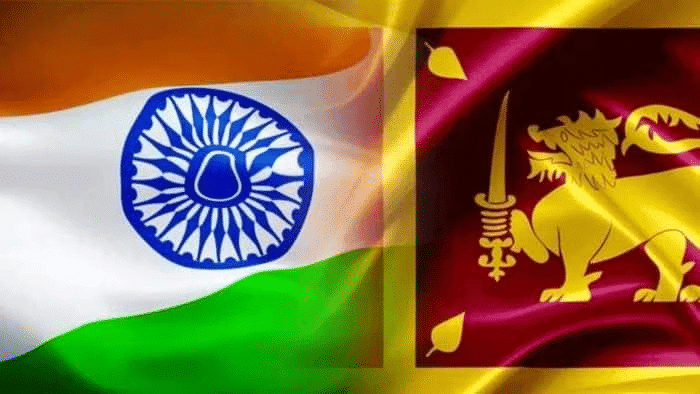 Why in News?
Why in News?
Prime Minister Narendra Modi's recent visit to Sri Lanka resulted in the signing of seven memorandums of understanding (MoUs) with the President of Sri Lanka. This visit highlights India's commitment to its 'Neighbourhood First Policy' and aligns with the 'MAHASAGAR' vision focused on promoting regional security and growth.
Key Takeaways
- Prime Minister Modi was honored with the 'Sri Lanka Mitra Vibhushana', the highest civilian award of Sri Lanka.
- A five-year Defence MoU was signed, structuring joint exercises and maritime surveillance.
- Agreements on energy infrastructure include a grid interconnection for electricity trade and a tripartite MoU for developing Trincomalee as an energy hub.
- India converted over USD 100 million in loans into grants to assist Sri Lanka’s debt restructuring.
- Prime Minister Modi announced the sending of Lord Buddha's relics for exposition in May 2025.
Additional Details
- Defence Cooperation: The Defence MoU aims to enhance collaboration in areas such as joint military exercises and maritime security, reaffirming Sri Lanka's commitment to not using its territory against India's interests.
- Economic Support: Key projects launched include the refurbishment of the Maho-Omanthai railway line, the Sampur Solar Power Project, and a solar initiative for religious sites, generating significant green energy.
- Trade and Commerce: India and Sri Lanka's trade reached USD 5.5 billion in 2023-24, with India being a major Foreign Direct Investment contributor.
- Tourism and Connectivity: India remains the largest source of tourists to Sri Lanka, significantly enhancing bilateral ties through cultural exchange.
Overall, the relationship between India and Sri Lanka is multifaceted, encompassing economic, cultural, and defense cooperation, alongside facing challenges such as Chinese influence and local political dynamics.
Challenges in India-Sri Lanka Relations
- Chinese Presence: China's Belt and Road Initiative raises concerns in India about strategic encirclement.
- Katchatheevu Island Disputes: Ongoing issues regarding fishing rights have led to tensions between Indian fishermen and the Sri Lankan Navy.
- Ethnic Reconciliation Challenges: The incomplete implementation of the 13th Amendment affects Tamil rights and has been a source of contention.
- Domestic Political Sensitivities: Political narratives in both countries influence foreign policy decisions and diplomatic relations.
Suggestions for Enhancing Relations
- Investment in Technology: Encouraging Indian investments in Sri Lanka’s IT sector can enhance economic integration.
- Renewable Energy Collaboration: India’s expertise in renewable energy can assist Sri Lanka in developing sustainable energy solutions.
- Implementation of ETCA: Swift execution of the Economic and Trade Cooperation Agreement can enhance trade relations.
- Strengthening Maritime Regulations: Improved patrolling and a Joint Working Group can address illegal fishing and promote dialogue.
In summary, while India and Sri Lanka share a strong foundation of cooperation, addressing the existing challenges and enhancing mutual collaboration can lead to a more robust bilateral relationship.
Shift from Globalism to Regionalism
Why in News?
- The global order is experiencing a transition from universalist globalism towards interest-driven regionalism and minilateralism. This shift is evident as nations increasingly favor smaller coalitions over traditional multilateral institutions.
Key Takeaways
- Ongoing global conflicts and institutional paralysis have diminished faith in multilateral governance.
- Regionalism and minilateralism are on the rise, promoting more focused cooperation.
- National sovereignty has been reasserted, especially in light of the COVID-19 pandemic.
- Developing countries are seeking alternatives to perceived inequalities in global institutions.
- India is recalibrating its foreign policy towards regional cooperation and strategic partnerships.
Additional Details
- Global Conflicts and Institutional Paralysis: Ongoing issues such as the Russia-Ukraine war and the Israel-Gaza crisis have highlighted the inadequacies of global governance structures, particularly the UN Security Council, where deadlocks often arise from great power rivalries.
- Rise of Regionalism and Minilateralism: Regionalism involves partnerships based on geographic and cultural alignment, while minilateralism refers to smaller, interest-based groups like the QUAD and I2U2, which foster targeted cooperation.
- Reassertion of National Sovereignty: The COVID-19 pandemic has exposed vulnerabilities in global supply chains, prompting countries to prioritize national preparedness over global solidarity.
- Historical Disillusionment: Developing nations, including India, have criticized global institutions like the WTO and IMF for their unequal power dynamics, leading to a search for alternative platforms like BRICS and AIIB.
India plays a crucial role in promoting regional integration through various initiatives and partnerships, showcasing its strategic importance in South Asia.
What is India’s Role in Regional Integration?
- Anchor of Regional Connectivity: India is central to enhancing cross-border infrastructure and trade corridors, such as the BBIN initiative (Bangladesh-Bhutan-India-Nepal) and the Kaladan Multi-Modal Transit Transport Project, which aim to improve economic and physical connectivity in South Asia.
- Security Provider and Humanitarian Responder: India's naval presence in the Indian Ocean Region and its disaster relief efforts, such as Operation Maitri in Nepal and Operation Brahma in Myanmar, bolster its credibility as a security provider.
- Trade and Investment Hub: As the largest economy in South Asia, India serves as a vital trade and investment anchor for neighboring countries, offering preferential trade arrangements and development assistance.
- Shared Cultural and Democratic Values: Initiatives like the International Buddhist Conclave and the revival of Nalanda University promote cultural ties and democratic values, enhancing India's civilizational influence.
What are the Key Challenges to India’s Regional Integration Efforts?
- Perception of Hegemony: Some smaller South Asian nations view India's dominance as overbearing, leading to mistrust that hampers regional cooperation.
- Bilateral Political Tensions: Ongoing disputes, such as the Kashmir issue with Pakistan and border tensions with China, strain India's regional relations and complicate collaborative efforts.
- Asymmetry in Economic Capabilities: Economic disparities in South Asia impede policy alignment and equitable integration, with intra-regional trade remaining low.
- China’s Strategic Entrenchment: China's growing influence in the region through initiatives like the Belt and Road Initiative presents a strategic challenge to India's leadership.
Way Forward
- Revive and Reform Regional Institutions: India should lead the revitalization of BIMSTEC and IORA through regular summits and enhanced funding, focusing on sector-specific cooperation.
- Strengthen Sub-Regional Partnerships: Deepening engagement through platforms and promoting functional minilaterals can enhance collaboration, particularly when consensus in SAARC is lacking.
- Boost Regional Trade and Connectivity: Improving trade through streamlined customs procedures and integrated infrastructure can foster economic interdependence.
- Foster Inclusive Engagement: India should emphasize transparent development aid and cultural diplomacy to counteract external influences under its Neighbourhood First Policy.
In conclusion, India’s evolving role in regional integration requires navigating complex geopolitical dynamics while fostering strategic partnerships to safeguard national and neighborhood interests.
Trends in Maternal Mortality

Why in News?
- A report by the United Nations Maternal Mortality Estimation Inter-Agency Group (MMEIG), titled “Trends in Maternal Mortality: 2000–2023,” has flagged India as the second-largest contributor to global maternal deaths after Nigeria.
Key Takeaways
- In 2023, India recorded 19,000 maternal deaths, accounting for 7.2% of global maternal mortality, making it the second largest contributor.
- Despite progress, India’s Maternal Mortality Ratio (MMR) decreased from 384 in 2000 to 80 in 2023, surpassing the global average decline.
- The global MMR saw a reduction from 328 to 197 per 100,000 live births, indicating a 40% decrease.
- Sub-Saharan Africa accounted for 70% of maternal deaths, with the highest regional MMR at 454.
Additional Details
- Global MMR Trends: The global MMR declined from an estimated 443,000 deaths in 2000 to 260,000 in 2023.
- Slowing Progress: The annual rate of reduction (ARR) of global MMR dropped to 1.6% (2016–2023) from 2.2% (2000–2023), making it challenging to achieve the Sustainable Development Goal (SDG) Target 3.1 of reducing global MMR to below 70 per lakh live births by 2030.
Despite significant improvements, India faces challenges in maternal healthcare, highlighted by the high absolute number of maternal deaths and regional disparities. Some states have achieved commendable MMRs, while others still lag behind, indicating a need for targeted interventions.
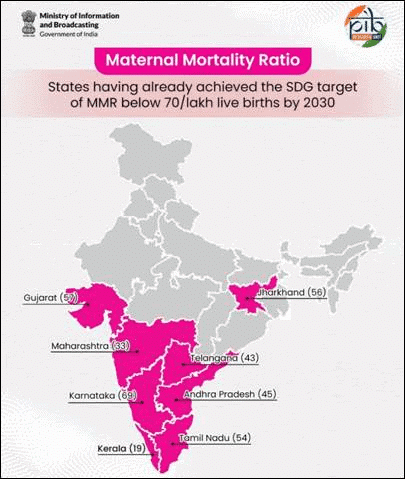
Concerns Regarding India’s Maternal Mortality Progress
- High Absolute Number of Maternal Deaths: Even with MMR at 80 per 100,000 live births, India's contribution to global maternal deaths remains significant.
- Unfair Comparisons in Global Reports: There are concerns about comparing India’s absolute numbers with those of countries like Nigeria without adjusting for population size.
- Slowing Pace of Progress: While India’s MMR decreased at a faster rate than the global average from 2000 to 2020, it is still insufficient to meet SDG 3.1 targets.
- Regional Disparities: States like Kerala have achieved low MMRs, while others like Assam and Madhya Pradesh remain high, demonstrating unequal healthcare access.
Challenges in Accessing Skilled Birth Care
- Despite initiatives such as the National Health Mission (NHM) and Janani Suraksha Yojana (JSY), rural areas lack access to skilled birth attendants.
- Complications such as postpartum hemorrhage and infections are leading causes of maternal deaths, particularly in underserved regions.
- Non-Communicable Diseases (NCDs): Increasing indirect maternal deaths due to diabetes and hypertension are concerning.
How India Can Accelerate Progress Towards Reducing Maternal Mortality Rate?
- Strengthen Primary Health Care (PHC): Enhance access to quality maternal care through Health and Wellness Centers (HWCs) in rural areas.
- Focus on Vulnerable Regions: Increase healthcare investments in states like Uttar Pradesh and Bihar using mobile health units and telemedicine.
- Policy Integration: Align maternal health policies with SDG 5 (Gender Equality) and SDG 10 (Reduced Inequalities) to ensure equitable access.
- Enhance Data Systems: Improve data collection under the Civil Registration System (CRS) for effective policymaking and resource allocation.
In conclusion, while India has made notable strides in reducing maternal mortality, significant challenges remain. Addressing these issues through targeted policies and investments is essential for meeting the SDG 3.1 target by 2030.
Mains Question:
- Despite progress, India remains among the top contributors to global maternal mortality. Critically analyze the reasons and suggest measures to meet the SDG 3.1 target by 2030.
Climate-Driven Economic Losses in Asia-Pacific
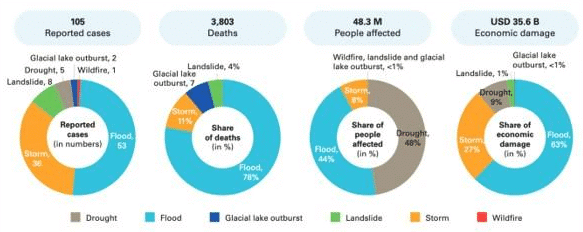
Why in News?
- The United Nations Economic and Social Commission for Asia and the Pacific (UNESCAP) has released a report titled "Economic and Social Survey of Asia and the Pacific 2025." This report reveals that one-third of countries in the Asia-Pacific region are experiencing economic losses of at least 6% of their Gross Domestic Product (GDP) each year due to climate-related events such as floods, heatwaves, droughts, and cyclones.
Key Takeaways
- Average Annual Loss (AAL) is estimated at 4.8% of GDP across 30 Asia-Pacific countries.
- Countries like Cambodia, Fiji, Myanmar, and Pakistan face AALs of at least 7% of GDP.
- Rapid urbanization and inadequate infrastructure amplify climate vulnerabilities in developing economies.
Additional Details
- Average Annual Loss (AAL): UNESCAP defines AAL as the expected annual economic loss from disasters, considering factors such as hazard frequency, intensity, and exposure. In countries like Cambodia, AAL can be as high as 11% of GDP.
- Vulnerability of Developing Economies: Eleven countries, including Afghanistan and Vietnam, are noted for their heightened vulnerability to climate risks due to factors like urbanization and weak infrastructure.
- Sectoral Exposure: Agriculture could face a reduction in rice yields by up to 14% by 2050, affecting food security, particularly in India. Countries dependent on fossil fuels may experience significant economic disruptions as the world shifts towards renewable energy.
According to the Asian Development Bank (ADB), India might suffer a GDP loss of 24.7% by 2070 due to climate impacts. The key drivers of these economic losses include:
- Extreme Heat: India is projected to experience more frequent heatwaves, with potential job losses due to heat-induced productivity declines.
- Agricultural Decline: Erratic rainfall and rising temperatures threaten food production, necessitating increased food imports.
- Rising Sea Levels: A significant portion of India's coastline is at risk from rising sea levels, increasing flood risks in coastal cities.
- Extreme Weather Events: India ranks among the countries most impacted by extreme weather, with substantial economic losses reported.
To mitigate climate-driven economic losses, the Asia-Pacific region can adopt the following strategies:
- Embrace Circular Economy: Promoting systems that reuse waste can reduce emissions and resource consumption.
- Foster Green Innovation: Encouraging startups focused on climate technology can drive sustainable solutions.
- Climate-Resilient Infrastructure: Investing in infrastructure that withstands climate shocks is essential for urban resilience.
- Green Taxonomy: Developing a framework for sustainable investments can enhance green financing efforts.
- Global Climate Funds: Utilizing financial resources like the Loss and Damage Fund can support climate resilience initiatives.
In conclusion, addressing climate vulnerabilities in developing countries within the Asia-Pacific region requires comprehensive strategies that integrate economic, environmental, and social considerations to build resilience and safeguard economic stability.
Mahavir Jayanti
 Why in News?
Why in News?
- Prime Minister inaugurated the Navkar Mahamantra Divas on April 10, 2025, highlighting that the teachings of Lord Mahavir—focused on non-violence, truth, and compassion—provide contemporary solutions to global challenges and align with the vision of 'Viksit Bharat'.
Key Takeaways
- Mahavir Jayanti, or Mahaveer Janma Kalyanak, is a significant festival in Jainism celebrating the birth of Vardhamana Mahavira, the 24th and last Tirthankara.
- This festival is observed on the 13th day of the Chaitra month in the Hindu calendar, with varying dates each year.
Additional Details
- Vardhamana Mahavira: He is regarded as a prominent spiritual teacher and reformer in Jainism.
- Contemporary Relevance of Teachings:Lord Mahavira's principles are immensely relevant today:
- Ahimsa (Nonviolence): Advocates for peaceful resolutions to conflicts and promotes compassion towards all beings, resonating with global peace initiatives.
- Aparigraha (Non-possessiveness): Encourages sustainable lifestyles and minimalism, aligning with the Mission LiFE and Sustainable Development Goals (SDG).
- Anekantavada: Teaches the acceptance of multiple truths, fostering respect and reducing intolerance and discrimination.
- Satya (Truth) and Asteya (Non-stealing): Promote integrity and transparency, essential for ethical business practices and combating corruption.
- Brahmacharya (Celibacy/Self-restraint): Addresses modern issues such as addiction and mental health through self-discipline.
The teachings of Lord Mahavira provide crucial insights into achieving a more compassionate and sustainable world.
US-China Tariff Escalation 2025
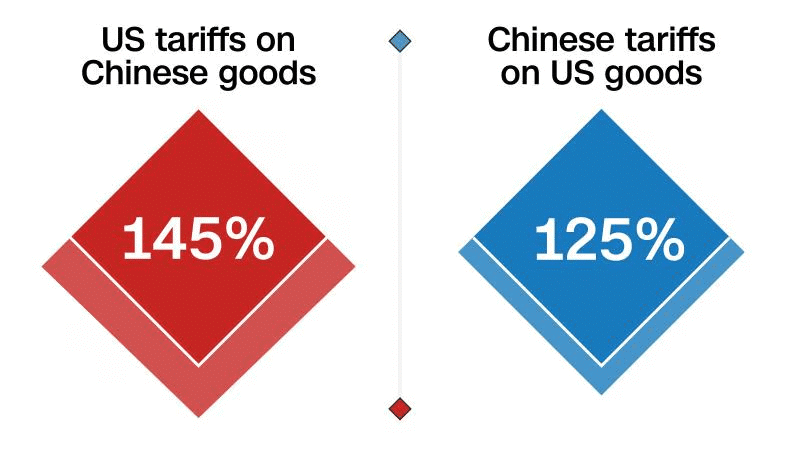 Why in News?
Why in News?
- China has increased tariffs on US goods from 84% to 125% in response to US President Donald Trump’s hike on Chinese imports to 145%. Previously, President Trump had announced a 90-day suspension of reciprocal tariffs for most countries, including India, but notably excluded China. These retaliatory actions between the US and China have raised significant concerns regarding global economic stability.
Key Takeaways
- China's tariffs on US goods increased significantly, indicating a worsening trade dispute.
- The ongoing trade tensions are a response to substantial US trade deficits with China and accusations of unfair practices.
- Both countries are attempting to reduce reliance on each other in critical sectors.
Additional Details
- Trade Deficits: The US recorded a trade deficit of USD 295 billion with China in 2024, prompting tariff hikes as a means to protect domestic industries.
- Intellectual Property Concerns: The US accuses China of intellectual property theft and forced technology transfers, which distort fair competition.
- Supply Chain Security: Both nations are aiming to lessen mutual dependence, especially concerning critical goods such as semiconductors, rare earth metals, and electric vehicle components.
- Geopolitical Rivalry: The trade tensions are rooted in broader strategic conflicts over territories such as Taiwan and the South China Sea, as well as competition in technology sectors like artificial intelligence and quantum computing.
- Tariff Evasion: To bypass US tariffs, Chinese firms have been rerouting goods through third countries like Vietnam and Malaysia, escalating broader trade tensions.
The full-scale trade war between the US and China poses risks, including potential recessions, product dumping, and disruptions in global supply chains, which could adversely affect economies worldwide, including India.
Risks of Full-Scale Trade War
- Recession Risks: The US and China together account for approximately 43% of global GDP, and a simultaneous economic slowdown could significantly impact global growth.
- Product Dumping: China may redirect surplus goods to other markets at subsidized prices, impacting local industries in various regions.
- Disruption to Global Supply Chains: Countries dependent on Chinese manufacturing or US-designed technologies would face economic shocks.
- Geopolitical Polarization: Countries may be forced to choose sides in the trade conflict, undermining multilateralism.
Implications for India
- Supply Chain Disruptions: India relies heavily on Chinese components for electronics, auto parts, and pharmaceuticals, leading to rising costs and delayed shipments.
- Pharmaceutical Sector at Risk: Approximately 70% of Active Pharmaceutical Ingredients (APIs) in India are sourced from China, making the sector vulnerable to tariff-induced price hikes.
- GDP and Inflation Effects: Slower global demand could hinder India’s GDP growth and raise inflation due to costly imports.
- Export Opportunities: Indian sectors like textiles and leather may benefit from reduced competition in the US market due to tariffs imposed on China.
Mitigation Strategies for India
- Global Actions: Revive the WTO’s Appellate Body to mediate tariff disputes and facilitate South-South trade corridors to reduce overdependence on the US-China axis.
- National Actions: Fast-track Free Trade Agreements (FTAs) with the EU, UK, and GCC to shield Indian exports from supply shocks linked to the US-China trade war.
- Production Incentives: Strengthen Production Linked Incentive Schemes in key sectors to minimize reliance on Chinese imports.
- China+1 Strategy: Position India as a preferred destination for supply chains looking to diversify away from China.
- Establish a National Trade Watchdog: Monitor tariff changes and rerouted goods to provide early warnings to Indian exporters.
In summary, the escalating tariffs between the US and China in 2025 significantly impact not only bilateral relations but also have far-reaching effects on global trade and the economy of India. Proactive measures are essential for mitigating these risks and capitalizing on potential opportunities.
India Ends Trans-Shipment Facility for Bangladesh
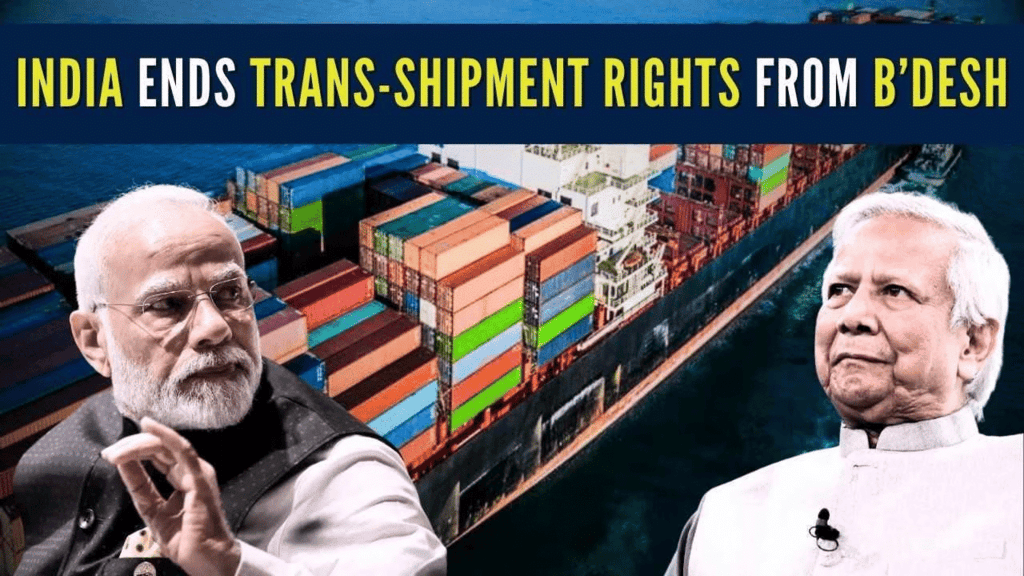 Why in News?
Why in News?
- India has terminated the transshipment facility established in 2020, which allowed Bangladeshi exports to be routed through Indian ports and airports. This decision follows remarks from Bangladesh during discussions with China, where it referred to Northeast India as 'landlocked' and positioned itself as the 'guardian of the ocean' for the region, effectively becoming a strategic gateway for China's influence.
Key Takeaways
- India's withdrawal of the transshipment facility was influenced by competitive pressures in the textile market.
- Rising air freight costs and strategic concerns regarding China contributed to the decision.
- The move could strain India-Bangladesh relations, especially as Bangladesh strengthens ties with China.
Additional Details
- Industry Pushback: The Apparel Export Promotion Council (AEPC) advocated for the removal of this facility, arguing that it favored Bangladesh and negatively impacted India's textile market share.
- Rising Air Freight Costs: Increases in freight rates to key markets like the US and Europe have led to calls for reducing the burden on Indian logistics infrastructure.
- China Factor: India's concerns about China's growing presence in the region, particularly near the Siliguri Corridor, influenced its decision. Bangladesh's invitation for Chinese investment in the Lalmonirhat Airbase exacerbates these tensions.
- The Northeast region, known as the "Seven Sisters," is geopolitically sensitive due to its borders with multiple countries, including Bangladesh, Bhutan, Myanmar, China, and Nepal.
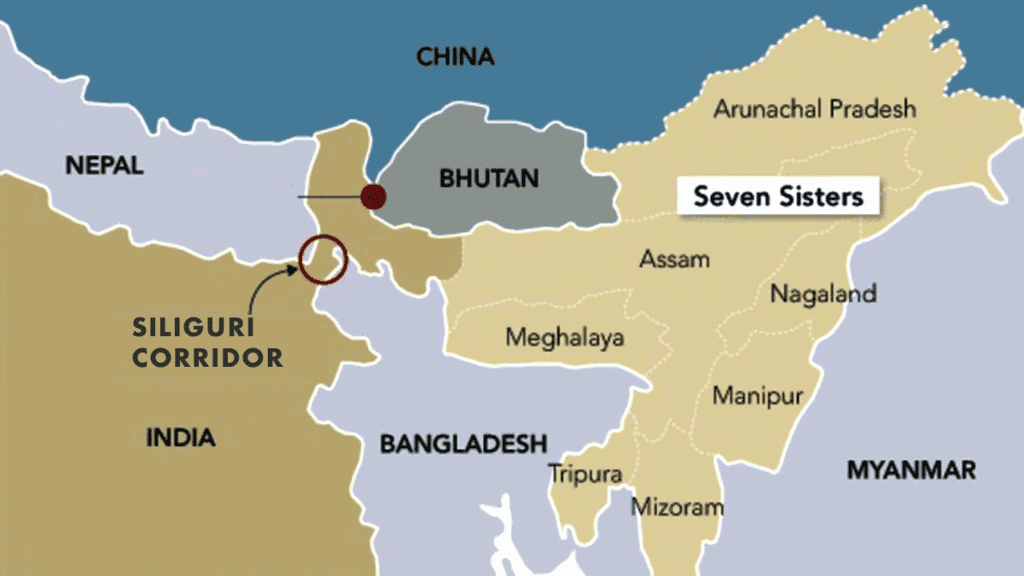
In 2024, Bangladesh's USD 50 billion export sector, primarily driven by ready-made garments (RMG), is likely to face increased costs and delays as a result of India's decision, potentially harming its global competitiveness in textiles. This move signals escalating tensions in India-Bangladesh relations, particularly as Bangladesh aligns more closely with China. Experts caution that this action may conflict with international trade agreements, including the World Trade Organization (WTO) General Agreement on Tariffs and Trade (GATT) Article V and the Trade Facilitation Agreement (TFA) Article 11, which ensure freedom of transit for landlocked nations.
Mains Question:
- Examine the reasons for India’s withdrawal of the transshipment facility to Bangladesh. What are its implications for regional trade and connectivity?
Periodic Labour Force Survey 2024
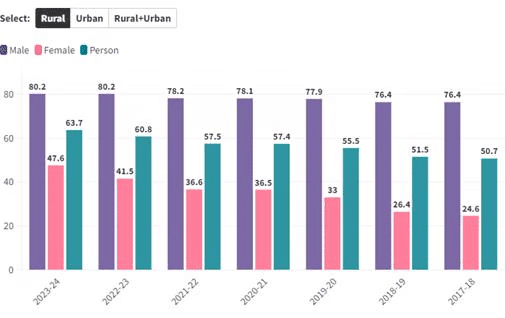 Why in News?
Why in News?
- The Ministry of Statistics and Programme Implementation (MoSPI) has released the Periodic Labour Force Survey (PLFS). This data offers essential insights into the evolving dynamics of India’s labour market across both rural and urban sectors.
Key Takeaways
- Labour Force Participation Rate (LFPR) in urban areas increased for males (from 74.3% to 75.6%) and slightly for females (from 25.5% to 25.8%), raising the overall urban LFPR to 51.0%.
- All-India LFPR remained stable at 56.2%.
- Urban Worker Population Ratio (WPR) rose slightly from 47.0% to 47.6%, while all-India WPR was nearly unchanged at 53.5%.
- Rural unemployment fell slightly to 4.2%, while urban male unemployment rose and female unemployment declined, keeping the overall urban unemployment rate at 6.7%.
- All-India unemployment rate dipped from 5.0% to 4.9%.
Additional Details
- Labour Force Indicators in Principal and Subsidiary Status (PS+SS): LFPR showed minor stability nationwide, with a slight decline from 59.8% to 59.6%. WPR decreased slightly from 58.0% to 57.7%, indicating a minor drop in employment.
- All-India unemployment rate rose slightly from 3.1% to 3.2%, with varying trends across sectors.
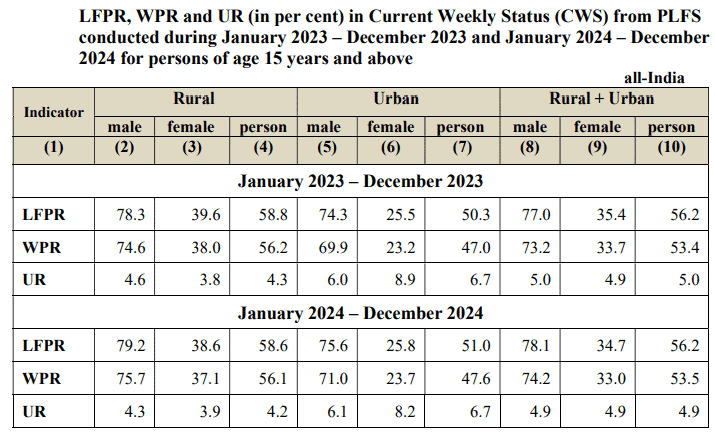
Concerns Regarding India’s Labour Force
- Gender Gaps: The female LFPR remains significantly lower than that of males, with urban female unemployment at 8.2%. Only 3% of employed women over 25 hold advanced degrees, indicating underutilization of educated women.
- Stagnation in Employment: Both WPR and LFPR show minimal year-on-year changes, suggesting sluggish job creation, with employment growth not proportional to economic growth.
- Youth Unemployment: A substantial part of the unemployed workforce consists of youth, particularly those with secondary or higher education. According to the International Labour Organization (ILO), global youth unemployment was 13.3% in 2023, while India’s rate was 10.2%.
- Low Productivity: India has the second-longest average workweek globally at 46.7 hours, yet its labour productivity remains low, with a GDP per working hour of USD 8, ranking 133rd globally.
- Rural Employment Dependence: A significant number of the rural workforce is engaged in low-productivity or subsistence work, raising concerns about underemployment and the prevalence of informal, insecure jobs.
Recommendations for Improvement
- Bridge the Skill-Industry Mismatch: Promote outcome-based skilling through partnerships with the National Skill Development Corporation (NSDC) and private sectors. Integrate the Future Skills Prime ecosystem to equip youth with Industry 4.0 skills such as Artificial Intelligence, data analytics, and cybersecurity.
- Drive Formalization with Inclusivity: Institutionalize ‘one-nation, one-registration’ for unorganized workers using e-Shram and Aadhaar, along with Unified Payments Interface (UPI) synergy.
- Facilitate Micro-Credit Access: Enhance digital onboarding of MSMEs via schemes like PM Vishwakarma and the Udyam Portal.
- Institutionalize Urban Employment and Mobility: Scale urban wage employment models based on Kerala’s Ayyankali Urban Employment Scheme, guaranteeing 100 days of wage employment per year to urban households.
- Leverage Climate Transition for Job Creation: Invest in green sectors (solar, EVs, waste-to-energy) to create employment while benefiting the environment.
- Design Gendered Labour Reforms: Pilot Women Workforce Participation Indices to map district-level constraints and design targeted interventions.
- Incentivize Employers: Offer Employment-Linked Incentive Schemes (ELI) where tax relief is proportionate to new formal jobs created, along with fiscal benefits for inclusive hiring practices.
In conclusion, despite high economic growth, India continues to grapple with challenges of jobless growth and youth unemployment. Addressing these issues requires a multifaceted approach focused on skill development, formalization, and inclusivity to enhance the labour market.
Need for Local Data Centres
Why in News?
- India contributes around 20% of the world’s digital data but holds less than 2% of global data center capacity. This highlights a significant infrastructure gap that prevents the full utilization of available data. Underutilizing data contradicts the notion that "data is the new oil," emphasizing its increasing importance in today’s economy.
Key Takeaways
- India's digital data generation is among the highest globally.
- Local data centers are essential for economic growth, job creation, and data sovereignty.
- Building local data centers can enhance national security and support AI development.
Additional Details
- What are Data Centers: A data center is a physical facility that organizations use to house their critical applications and data, comprising routers, switches, firewalls, storage systems, servers, and application-delivery controllers.
- Types of Data Centers:
- Enterprise (On-Premises): Owned and managed by a single company.
- Public Cloud (Hyperscale): Operated by Cloud Service Providers (CSPs) like Azure and IBM Cloud.
- Colocation Facilities: Companies rent space but own their hardware; providers manage power and cooling.
- Edge Data Centers: Smaller facilities closer to users, crucial for reducing latency.
- Key Benefits:
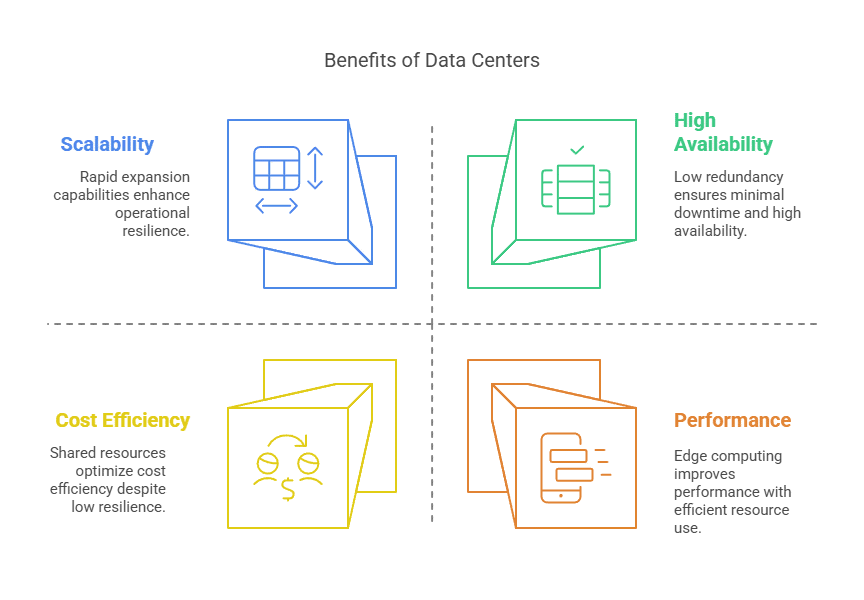
India's digital footprint is significant, with millions of users on platforms like Facebook, WhatsApp, and YouTube, necessitating local data storage. Expanding data centers could attract up to USD 400 billion in investments, creating 1-2 million direct jobs and three times more indirect jobs. Local data centers will also ensure sensitive information remains within India, enhancing compliance with the Digital Personal Data Protection Act, 2023.
Despite the challenges such as high capital investment and operational hurdles, India can promote data center growth through policies that incentivize infrastructure development, connectivity enhancements, and skill development. Strategic investments and government support are essential for realizing India’s digital aspirations and achieving its USD 5 trillion economy target.
Olive Ridley Turtles in India
 Why in News?
Why in News?
- A recent study has highlighted that the Olive Ridley turtles found in the Indian Ocean are among the oldest turtle populations globally. This new insight challenges previous beliefs regarding the age of these sea turtles and their evolutionary history.
Key Takeaways
- Olive Ridley turtles in the Indian Ocean have endured various climate changes, diverging from their Atlantic and Pacific counterparts approximately 300,000 to 400,000 years ago.
- This finding contradicts the earlier notion that Central American Olive Ridley turtles were the oldest due to the formation of the Isthmus of Panama.
Additional Details
- Olive Ridley (Lepidochelys olivacea): This species belongs to the class Reptilia and the family Cheloniidae. It is recognized as the smallest sea turtle species, characterized by its olive or grayish-green coloration and heart-shaped carapace.
- Olive Ridley turtles are omnivores and are known for their unique nesting behavior called arribada, where thousands of female turtles nest simultaneously.
- These turtles migrate approximately 9,000 km from the Pacific Ocean to the Indian seas, nesting 1 to 3 times between December and March, typically laying around 100 eggs per clutch.
- Major nesting sites include Gahirmatha and Rushikulya in Odisha, which are among the largest in the world. In 2024, over 1.3 million turtles laid eggs at these sites, surpassing the previous record of 1.15 million in 2023.
- Other significant nesting locations in India are the Devi River mouth in Odisha and the Andaman Islands.
- Threats to Olive Ridley turtles include bycatch in fishing gear, poaching, habitat loss, and plastic pollution. Additionally, climate change disrupts their nesting patterns and food availability due to rising temperatures and sea levels.
- They are protected under the Wildlife Protection Act, 1972 (Schedule 1), listed as Vulnerable on the IUCN Red List, and included in CITES (Appendix I).
In conclusion, the Olive Ridley turtles of the Indian Ocean represent a significant part of marine biodiversity, facing numerous threats despite their ancient lineage. Conservation efforts are crucial to ensure their survival and the health of marine ecosystems.
Ambedkar and Gandhi: Ideological Similarities & Differences
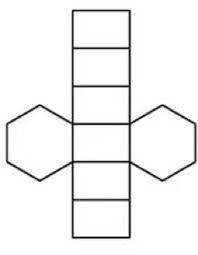 Why in News?
Why in News?
- As India reflects on the legacy of Dr. B.R. Ambedkar on his 135th birth anniversary, revisiting his ideas on caste, democracy, and social reform offers valuable insights for building an inclusive and just society. His vision often converged with that of Mahatma Gandhi on the need for upliftment of the oppressed, yet differed sharply in approach.
Key Takeaways
- Both Ambedkar and Gandhi rejected violent revolution and communism.
- They emphasized human dignity and social justice but through different frameworks.
- Both recognized the role of ethics in public life and governance.
- There were significant differences in their approaches to caste and social reform.
Additional Details
- Rejection of Violent Revolution and Communism: Both leaders opposed the violent methods of communism. Gandhi criticized Bolshevism for its coercive nature, advocating for non-violence, while Ambedkar emphasized a sustained, non-violent struggle for justice.
- Emphasis on Human Dignity and Social Justice: Gandhi promoted Sarvodaya (upliftment of all), whereas Ambedkar focused on Bahujan Hitay (welfare of the majority).
- Role of Ethics in Public Life: Gandhi's politics were founded on moral idealism, while Ambedkar, despite being a rationalist, acknowledged the significance of ethics in governance.
- Caste and Varna System: Ambedkar called for the total annihilation of caste and criticized texts like Manusmriti for legitimizing caste oppression, whereas Gandhi viewed the caste system as a distortion of true Hinduism.
- Separate Electorates for Dalits: Ambedkar supported separate electorates for political representation of the Depressed Classes, while Gandhi opposed this, fearing it would further divide Hindu society, leading to the Poona Pact that established reserved seats instead.
- Religion and Social Reform: Ambedkar converted to Buddhism, advocating for equality, while Gandhi treated religion as a moral guide, promoting equal respect for all religions.
- Means of Social Transformation: Ambedkar advocated for social reforms through legal means, while Gandhi emphasized personal morality and non-violence.
- Role of the State and Constitution: Ambedkar supported state-led affirmative action, believing democracy is a social organization, contrasting with Gandhi's vision of minimal state intervention.
- Economic Models: Ambedkar favored state socialism and planned development, while Gandhi promoted small-scale industries and self-reliance.
In conclusion, Gandhi and Ambedkar, despite their differing methods, shared a commitment to creating a just and inclusive India. Their fundamental differences in approach—Gandhi's moral appeals versus Ambedkar's advocacy for state-led social engineering—offer a balanced perspective on addressing caste, inequality, and democratic values in contemporary society.
SC Sets a Deadline for Presidential Decision on Reserved Bills
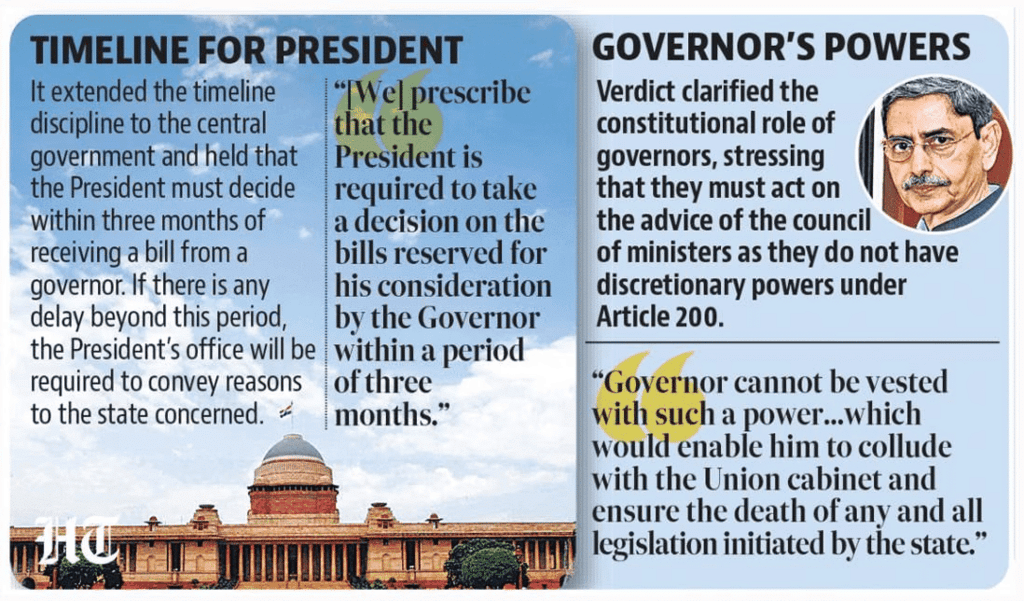 Why in News?
Why in News?
- The Supreme Court (SC) of India, in the case of State of Tamil Nadu vs. Governor of Tamil Nadu, 2023, has established a groundbreaking three-month deadline for the President to decide on Bills that have been referred by the Governor under Article 201 of the Constitution.
Key Takeaways
- The SC emphasized the absence of a specific timeline for Presidential assent in Article 201, which can lead to indefinite delays in legislative processes.
- Presidential inaction is deemed a violation of the constitutional principle of non-arbitrariness.
- The ruling mandates that the President must make a decision within three months, with any delays needing to be justified and communicated to the State.
- States may file writ petitions to compel a decision if the President fails to act within the stipulated timeframe.
Additional Details
- Article 201: This article stipulates that when a Bill is reserved by a Governor for Presidential consideration, the President must either assent or withhold assent.
- The SC highlighted that the President cannot use an "absolute veto" by indefinitely delaying assent and must provide valid reasoning for any withholding of assent.
- If a Bill is reserved for reasons of unconstitutionality, the President is encouraged to seek the Supreme Court's opinion, which carries significant persuasive weight.
- References to past recommendations, such as those from the Sarkaria Commission and Punchhi Commission, highlight the necessity for time-bound decisions on reserved Bills.
The SC's ruling reinforces accountability in the legislative process by ensuring that the President acts within a reasonable timeframe, thereby enhancing the effectiveness of federal governance. This decision is crucial for preventing potential misuse of executive powers and safeguarding the legislative process from unnecessary delays.
What is the Governor’s Role in the Passage of State Bills?
- For a comprehensive understanding of the Governor's role in the legislative process, click here: Governors’ Role in State Bills
What are the Constitutional and Functional Differences between the President and the Governor?
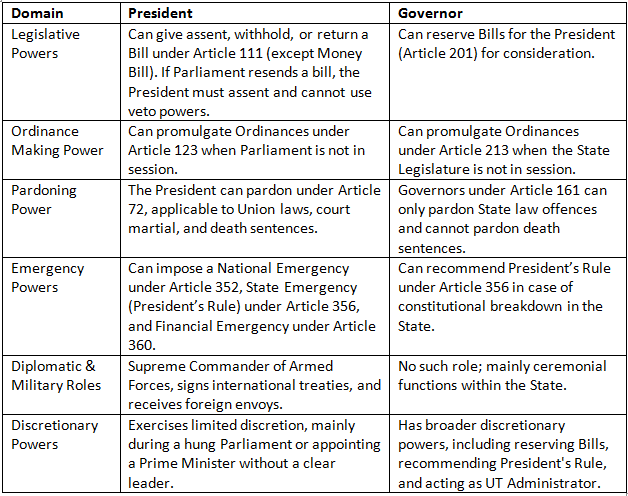
What are the Key SC Judgements Related to the Powers of the Governor and the President?
President:
- S. R. Bommai v. Union of India (1994): SC ruled that the President's Rule is subject to judicial review and cannot be imposed arbitrarily.
- Kehar Singh v. Union of India (1988): The SC ruled that the President's pardoning power is independent of the judiciary but can be reviewed for procedural fairness.
- R.C. Cooper v. Union of India (1970): SC held that the President’s satisfaction regarding an ordinance is not immune from judicial review.
Governor:
- Shamsher Singh v. State of Punjab (1974): SC emphasized that the Governor must act on the advice of the Council of Ministers, except in certain situations.
- Rameshwar Prasad v. Union of India (2006): Declared the dissolution of the Bihar Legislative Assembly unconstitutional, reinforcing the need for constitutional adherence.
The SC's interpretation of Article 201 not only imposes a clear timeline for the President's actions regarding state bills but also fortifies the principles of accountability and transparency in governance. This ruling empowers States to seek judicial intervention in case of undue delays, thereby upholding the integrity of the legislative process.
EduRev Mains Question:
- Discuss the significance of the Supreme Court's ruling on the President’s role in state Bills. How does this decision align with the constitutional principle of non-arbitrariness?
|
194 videos|842 docs|2234 tests
|
FAQs on Weekly Current Affairs (8th to 14th April 2025) - General Test Preparation for CUET UG - CUET Commerce
| 1. What is the significance of the SC verdict on governors' powers over state bills? |  |
| 2. How will the US building small modular reactors in India impact energy security? |  |
| 3. What are the current trends in India-Sri Lanka relations? |  |
| 4. What does the shift from globalism to regionalism mean for international relations? |  |
| 5. What are the main factors contributing to trends in maternal mortality? |  |
















